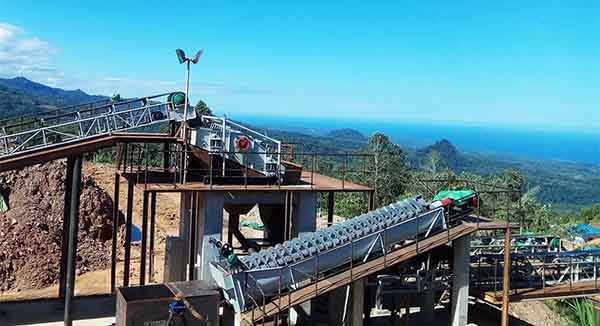Seven Methods to Effectively Improve The Classification Efficiency of The Spiral Classifier
In the concentrator, the spiral classifier is often used for pre-classification and inspection classification in the grinding circuit, and can also be used in ore washing and desliming operations. Because of its simple structure, stable work, and convenient operation, it is widely used in major mineral processing plants.
However, in production, the spiral classifier has the problem of declining classification efficiency. The root cause of this problem is that the fine and heavy mineral particles and the coarse and light mineral particles settle turbulently during the classification process, resulting in the phenomenon of equal precipitation, which causes the classifier to settle a large amount of sand and overflow and run out of coarse. So, what measures should be taken to effectively improve the classification efficiency of the spiral classifier?
1. Increase the screw speed appropriately
The speed of the spiral should be able to transport the settled coarse particles. The faster the speed of the spiral shaft of the classifier, the stronger the stirring effect on the slurry, and the more coarse particles are entrained in the overflow product. In order to obtain a thicker overflow and deal with materials with high density and quicker settlement, the spiral speed can be appropriately increased. Generally, it is controlled in the range of 1.5-10r/min.
However, for the classifier used in the second-stage grinding or grinding cycle, the spiral speed should be slowed down as much as possible. To obtain coarse overflow, the speed of the spiral with a diameter of 2m should not exceed 6r/min, and the speed of the spiral with a diameter of 1m or more should be controlled at 2-8r/min.
2. Reasonably control the slurry concentration
When the grading feedstock contains more mud or fine-grained grades, the additional water can be appropriately increased to reduce the slurry concentration and obtain the required overflow fineness. When the feedstock contains a small amount of mud or has undergone desliming treatment, the slurry concentration should be appropriately increased to reduce excessive fine-grained materials entrained in the returned sand.
3. Adjust the height of the overflow weir
Adjusting the height of the overflow weir can change the size of the settlement area. When the overflow weir is increased, the sedimentation area of the ore particles can be increased, and the volume of the classification zone can also be increased. At the same time, as the slurry surface rises, the stirring effect of the spiral on the slurry surface is also weakened, which can make the overflow finer. Generally, the height range of the overflow weir of the high weir spiral classifier is controlled within the range of 400-800mm. The height of the overflow weir of the submerged spiral classifier is generally between 930-2000mm.
4. Keep the feed evenly
When the slurry concentration is constant, the amount of ore feed increases, and the flow velocity of the slurry also increases, thus making the particle size of the overflow product coarser. As the amount of ore decreases, the particle size of the overflow product becomes finer, and the content of fine particles in the returned sand also increases. Therefore, the ore feeding amount of the classifier should be appropriate, uniform, and not large or small. The smaller the fluctuation range, the better, so that the classifier can work under normal processing conditions and obtain a good classification effect.
5. Adopt a double-sided discharge method
Change the traditional spiral classifier’s front-end discharging method, adopting double-sided discharging. This can shorten the movement path of the ore particles in the classifier, avoid the backflow of the ore slurry, discharge the overflow of fine particles in time, and shorten the settling time.
6. Add a stirring device to the lower end of the classifier
For the fine ore particles that have settled to the bottom of the tank, an agitating device is added to the lower end of the spiral classifier, which is brought to the surface of the slurry again, and discharged with the overflow to reduce the fineness in the sedimentation and improve the efficiency.
7. Add a new force field
Consider changing the traditional gravity settlement grading and adding a new force field in the grading area. For example, adding a cylindrical screen to the upper part of the classifier for secondary classification can improve the efficiency of the classifier.
Related Products
There are no relevant articles.



